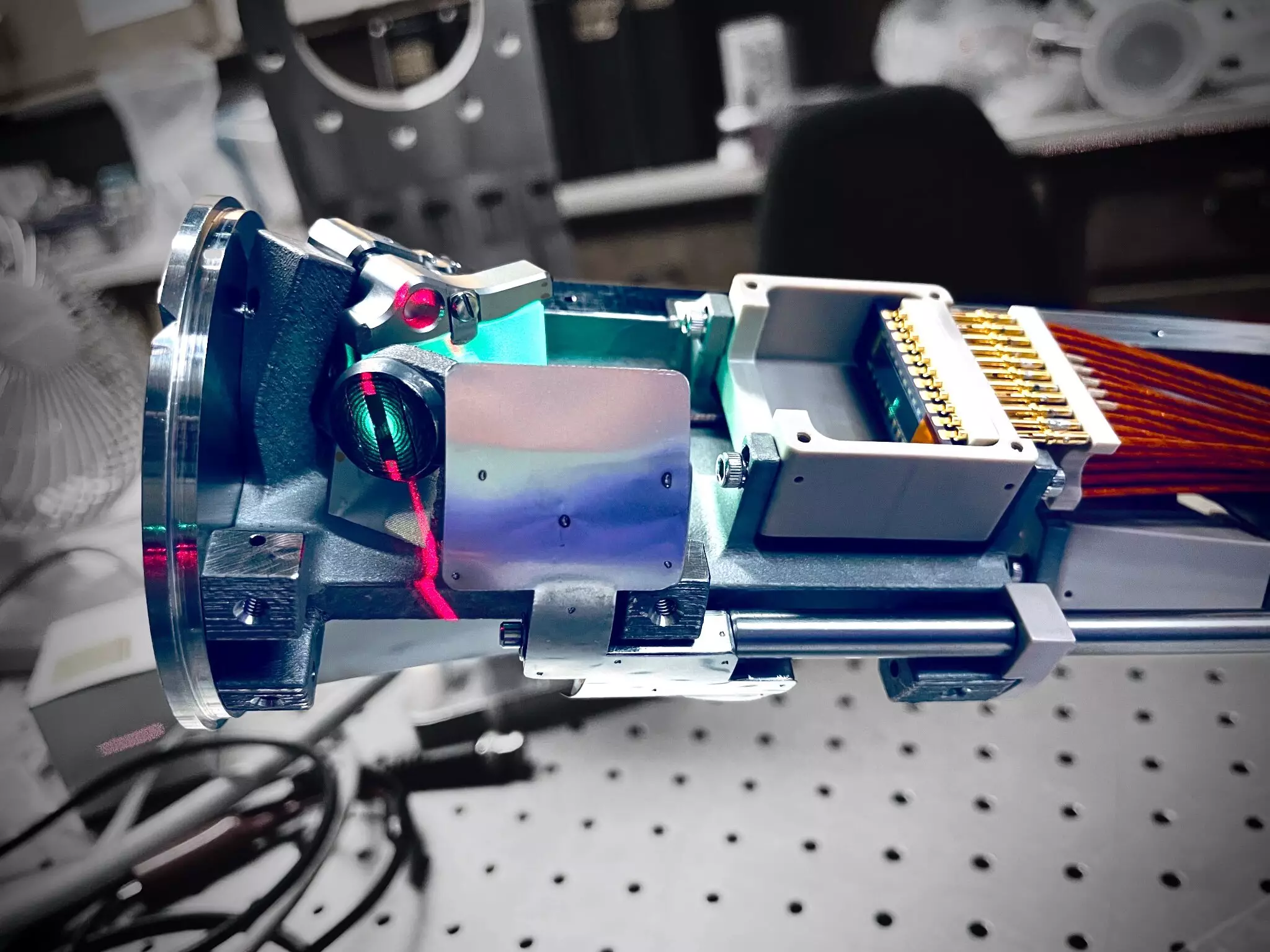The quest to create heat from fusion reactions involves complex manipulation of plasma, the fourth state of matter that dominates the visible universe. Recently, scientists at the U.S. Department of Energy’s Princeton Plasma Physics Laboratory (PPPL) unveiled a cutting-edge plasma measurement instrument called ALPACA. This diagnostic tool has the potential to enhance fusion reactions in tokamaks, leading to increased power output in future fusion power plants.
Fueling plays a crucial role in the efficiency of fusion reactions. Neutral atoms surrounding the plasma contribute to the fueling process by increasing the plasma particle density. This, in turn, influences the number of fusion reactions and ultimately determines the amount of fusion power generated. ALPACA focuses on observing the light emitted by neutral atoms surrounding the plasma inside DIII-D, a tokamak operated by General Atomics. By studying this light, scientists can gather valuable information about neutral atom density, which is vital for sustaining high plasma temperatures and optimizing power generation.
Hydrogen atoms are instrumental in the fueling process, originating from hydrogen gas injections, atomic formation through electron-nuclei combinations, and atom release from chamber surfaces during tokamak operations. ALPACA, akin to a pinhole camera, collects plasma light at the Lyman-alpha wavelength to determine neutral atom density based on brightness measurements. This innovative approach provides researchers with clear data, unlike previous instruments, enabling a deeper understanding of fueling dynamics.
Efficient fusion reactions rely on controlling fueling mechanisms to boost heat production in tokamaks. Higher plasma temperatures translate to increased electricity generation in fusion power plants, emphasizing the significance of enhancing heat output through optimized fueling strategies. ALPACA’s role in studying fueling patterns contributes to advancing plasma control techniques for more efficient and sustainable fusion power generation.
The development and implementation of ALPACA underscore the collaborative efforts between PPPL, General Atomics, and academic institutions like Massachusetts Institute of Technology and North Carolina State University. Through interdisciplinary teamwork, researchers aim to unlock the full potential of fusion reactions by refining plasma measurement techniques and enhancing diagnostic tools like ALPACA and its counterpart LLAMA. These instruments provide invaluable insights into the complex nature of plasma behavior, guiding efforts to maximize fusion heat generation.
ALPACA’s design incorporates advanced technologies like 3D printing, enabling complex structural configurations for efficient cooling and precise data collection. The integration of a hollow chamber within the instrument’s framework showcases the innovative approach taken by PPPL researchers in tackling the unique challenges of plasma diagnostics. Mechanical engineering aspects, led by experts like David Mauzey, highlight the dedication and expertise required to deliver state-of-the-art instrumentation for fusion research.
As ALPACA undergoes testing and prepares to gather data at DIII-D, the fusion research community anticipates significant advancements in plasma control and heat optimization. By harnessing the potential of innovative diagnostics like ALPACA, scientists are paving the way for next-generation fusion power plants with enhanced efficiency and sustainability. The collaborative spirit driving fusion research fuels the pursuit of clean, abundant energy sources to meet global energy demands while minimizing environmental impact.
ALPACA represents a significant milestone in plasma research, offering new insights into fueling processes and fusion heat generation. With a dedicated focus on plasma control and diagnostic innovation, researchers are poised to revolutionize the field of fusion energy and bring us closer to a sustainable energy future.


Leave a Reply